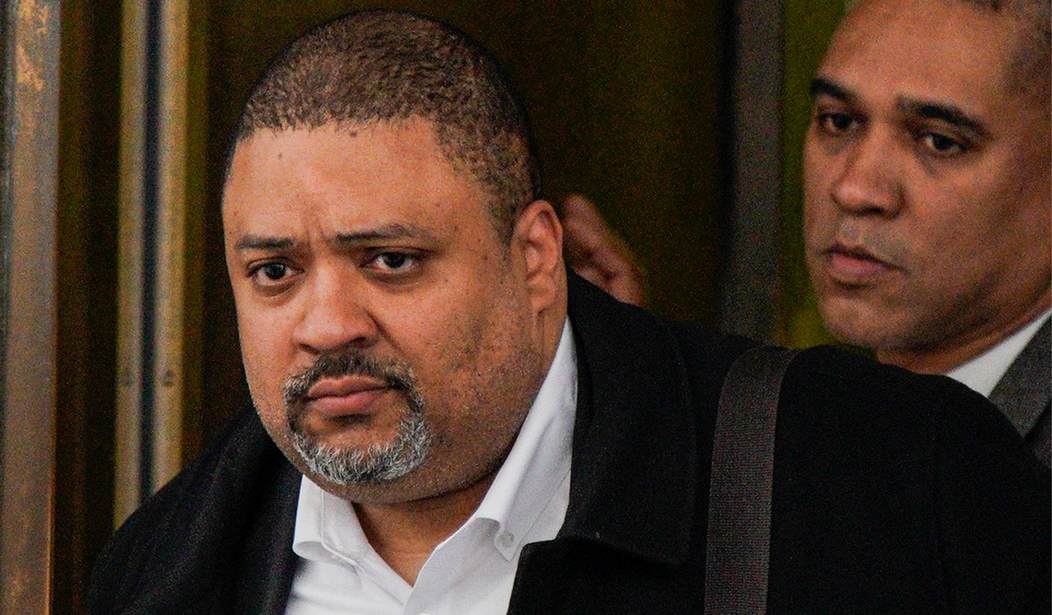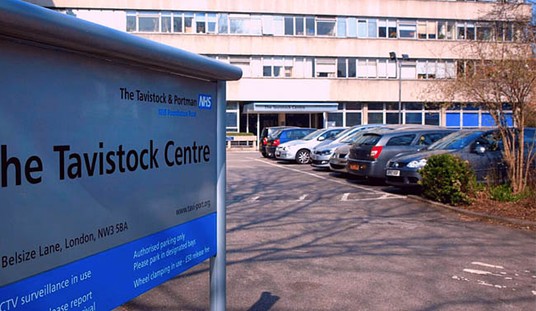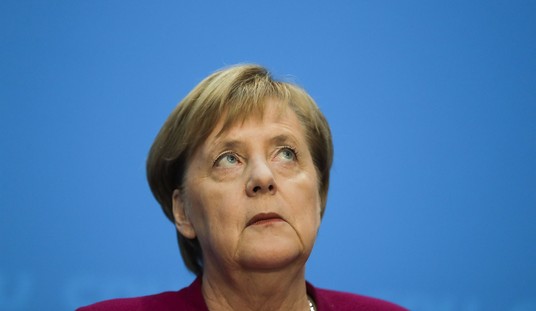Will the federal judiciary remove the "convicted felon" epithet from Democrat lexicons once and for all? Even before New York's appellate bench does so on the merits?
That's not quite what the Second Circuit ruled today in a rebuke to its lower court over an appeal made twice by Donald Trump in the Alvin Bragg case. Trump has not yet appealed the conviction in that case to the US Supreme Court, as the appellate bench in New York has dragged its feet in reviewing the conclusion of the trial. The appeal before the federal appellate court relates to a motion Trump filed during the Bragg case twice, demanding removal of the case to a federal court as it involved conduct while in federal office.
The district court denied those requests both times, the second time after the Supreme Court ruing in Trump v US made clear that presidents had some immunity from prosecutions involving official acts. Both the district and state courts ignored that ruling in proceeding with the criminal trial, using official acts as part of their case for felonious conduct, in flagrant defiance of the earlier SCOTUS ruling.
This morning, a unanimous three-judge panel at the Second Circuit rebuked the federal judge for overlooking the obvious issues in the case and the substantive arguments for removal from the state court. They ordered the judge to re-hear the case with Trump v US in mind, but also while exercising appropriate judgment on timeliness:
A federal appeals court on Thursday ordered a lower court to take another look at whether President Donald Trump's criminal hush money prosecution in Manhattan deserved to be heard in federal court.
After Trump was convicted last year on 34 felony counts of falsifying business records, he sought to move the case into federal court from state court due to the Supreme Court's landmark ruling last year granting the president immunity for official acts.
U.S. District Court Judge Alvin Hellerstein denied the request, concluding that Trump failed to show good cause for move after the jury had rendered its verdict.
On Thursday, a three-judge panel of the 2nd U.S. Circuit Court of Appeals ordered Hellerstein to reconsider.
At issue here is the right of federal officers under state prosecution to seek removal to federal court for cases involving their conduct in office. This exists for good reasons; federal officers performing duties unpopular with state or local authorities could find themselves charged with violating state or local laws for the proper execution of their offices. No better example exists at the moment than threats to arrest and prosecute agents from Immigration and Customs Enforcement (ICE) for detaining and arresting illegal aliens who have defied warrants and those attempting to obstruct those enforcement actions. Any ICE agent thus charged would have recourse to removal of the case to federal court, where the Department of Justice and/or federal judges could quash such actions.
Granted, this particular case involves conduct that relates to personal interests. However, Bragg introduced evidence of official acts in the prosecution, at a time when the Supreme Court had already begun consideration of whether presidents had an expectation of immunity for such acts. Bragg and the state court proceeded regardless, and when the Supreme Court ruling in Trump v USA came down, Trump and his team tried filing another motion to remove the case after the verdict.
The questions here are twofold. One, did Bragg's prosecution enable Trump to legitimately demand removal, and did the motion come in a timely enough manner? The ruling itself is worth the read. The crux of this order comes in the summary, paragraph break inserted for readability:
Following a state court jury trial, Trump was convicted on all counts. After Trump’s conviction but prior to sentencing, the United States Supreme Court issued its presidential immunity decision in Trump v. United States, 603 U.S. 593 (2024). Trump thereafter sought leave to file a second, untimely notice of removal pursuant to § 1442(a)(1) and 28 U.S.C. § 1455(b), which establishes the procedure for removal of criminal prosecutions and requires that the defendant show “good cause” for an order granting leave to file a late notice of removal. Trump argued principally that the Supreme Court’s intervening decision in Trump v. United States rendered the State’s prosecution one “relating to” his official acts as President such that the case was now removable and established good cause for his untimely filing. The District Court denied leave, concluding, among other things, that “good cause” had not been shown for the delay in seeking removal a second time.
We cannot be confident that in doing so, the District Court adequately considered issues relevant to the good cause inquiry so as to enable meaningful appellate review. Those issues include but are not limited to the impact of Trump v. United States on the removability of the underlying state prosecution. For example, the District Court did not consider whether certain evidence admitted during the state court trial relates to immunized official acts or, if so, whether evidentiary immunity transformed the State’s case into one that relates to acts under color of the Presidency. Nor did the District Court consider whether any notice of removal of a criminal prosecution under § 1455(b)(1) must be filed before trial even if new grounds for removal arise during or after trial. We therefore VACATE the District Court’s order denying Trump’s motion for leave to file a second notice of removal and REMAND for reconsideration of the motion consistent with this opinion.
The per curiam order calls the second removal motion "admittedly untimely," but also scolds the district court for not addressing Trump's claims for whether the delay was still reasonable. Trump offered two explanations, neither of them mutually exclusive:
The State now challenges Trump’s claim that he acted with reasonable diligence. It asserts that Trump “waited more than two months” after the Supreme Court issued its decision to file his motion for leave. Appellee’s Br. 41. And it claims that Trump “should have exercised diligence and sought relief soon after those new circumstances arose” yet “failed to do so.” Appellee’s Br. 41. Trump counters that his delay was reasonable because the two-month period between the Supreme Court’s decision and the filing of his motion for leave to file a second notice of removal coincided with a tumultuous presidential campaign and other urgent legal matters requiring the attention of his legal team. See Reply Br. 31–32.
At oral argument, however, Trump acknowledged that he could have sought removal immediately following the Supreme Court’s decision but opted instead to “reasonably g[i]ve the state court judge an opportunity to address the effect of” that decision. Oral Argument Tr. 20. According to counsel, Trump sought removal to federal court only after the state trial court suggested that it was likely to reject Trump’s immunity argument and proceed to sentencing.
In its denial of leave to file a second removal notice, however, the District Court did not address whether Trump acted diligently. In fact, the District Court did not grapple with any of the central issues that we have identified above. Explaining only that “[n]othing in the Supreme Court’s opinion affects [the] previous conclusion that the hush money payments were private, unofficial acts, outside the bounds of executive authority,” Trump, 2024 WL 4026026, at *2, the court bypassed what we consider to be important issues bearing on the ultimate issue of good cause.
In other words, the Second Circuit panel thinks Trump had at least a reasonable argument -- and he did -- which the court didn't even bother to consider. In a footnote, the judges remind everyone of the circumstances around the delay in filing the second removal motion by quoting from oral arguments:
Trump’s counsel explained:
We could have come up immediately . . . . I just think we clearly would have been criticized. Because if the concern is about stepping on state courts, we reasonably gave the state court judge an opportunity to address the effect of the Supreme Court’s decision. And only when he said, I’m going to rule on immunity on September 16, and I’m going to sentence on September 18, two days later, only then did we say, well, wait a minute. We’re not going to be able to take an interlocutory appeal of that ruling, and it sure looks like he’s going to deny it because he is setting sentencing. So we’ve given him a fair opportunity, and now we’ve come to federal court.
All of this took place in the context of a presidential election. The trial took place while the Republican Party primaries were still taking place, and this sequence took place in the middle of the general election. It is quite clear that Judge Marchan did not give Trump and his team adequate consideration of the implications of Trump v US; scheduling both the immunity claim hearing and sentencing at the same time is fairly clear evidence that Marchan had no intention of giving the Supreme Court ruling serious consideration.
The three-judge panel did take care to avoid tipping its hand on how they see these circumstances:
We leave it to the able and experienced District Judge to decide whether to solicit further briefing from the parties or hold a hearing to help it resolve these issues. We express no view and “neither rule nor imply” that the District Court should resolve Trump’s motion for leave to file a second removal notice in any particular way. Fulton v. Goord, 591 F.3d 37, 45 (2d Cir. 2009). We simply direct the District Court to consider the motion anew in light of our opinion.
Perhaps that disclaimer is literally true, but only in the procedural sense. It isn't difficult to read between the lines of this ruling, however, especially with the pointed inclusion of the oral argument point on the issue of timeliness. The district court should have at least addressed that argument to determine its validity and application. Given the repeated references to Trump v US, the court apparently thinks that the judge should have gone past that to consider the merits of the removal motion as well.
Will Judge Hellerstein read between the lines? Good question, but we should also wonder whether the New York state appellate jurists reviewing this lawfare monstrosity should give this a read as well. They could moot this by throwing the whole case out, and can even use the excuse that Bragg infected it by using official acts that are immune under Trump v US rather than be more honest and toss it for being a politically motivated hack job by a corrupt prosecutor. Either works for me, and I am sure either would work for Trump.







